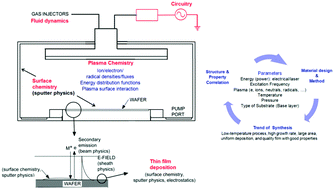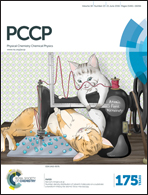Low temperature synthesis of silicon quantum dots with plasma chemistry control in dual frequency non-thermal plasmas†
Abstract
The advanced materials process by non-thermal plasmas with a high plasma density allows the synthesis of small-to-big sized Si quantum dots by combining low-temperature deposition with superior crystalline quality in the background of an amorphous hydrogenated silicon nitride matrix. Here, we make quantum dot thin films in a reactive mixture of ammonia/silane/hydrogen utilizing dual-frequency capacitively coupled plasmas with high atomic hydrogen and nitrogen radical densities. Systematic data analysis using different film and plasma characterization tools reveals that the quantum dots with different sizes exhibit size dependent film properties, which are sensitively dependent on plasma characteristics. These films exhibit intense photoluminescence in the visible range with violet to orange colors and with narrow to broad widths (∼0.3–0.9 eV). The observed luminescence behavior can come from the quantum confinement effect, quasi-direct band-to-band recombination, and variation of atomic hydrogen and nitrogen radicals in the film growth network. The high luminescence yields in the visible range of the spectrum and size-tunable low-temperature synthesis with plasma and radical control make these quantum dot films good candidates for light emitting applications.


 Please wait while we load your content...
Please wait while we load your content...